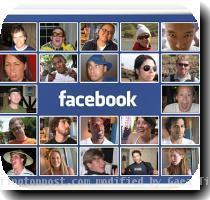Federal Communications Commission seeking more wireless spectrum for high-speed Internet
By APWednesday, February 24, 2010
FCC seeking more spectrum for wireless broadband
WASHINGTON — Federal regulators are hoping to find more wireless spectrum for mobile broadband services by reallocating some airwaves now assigned to television broadcasters and others.
Under a long-awaited proposal outlined by the Federal Communications Commission on Wednesday, broadcasters and other existing spectrum holders would voluntarily give back some spectrum and share in proceeds raised by government auctions of those airwaves to wireless companies.
Wireless carriers have been clamoring for more spectrum as their customers increasingly check e-mail, update Facebook and watch video on the go. Broadband services are already choking in some markets, and next-generation services will tax wireless networks even more.
“Although the potential of mobile broadband is limitless, its oxygen supply is not,” FCC Chairman Julius Genachowski said in a speech at the New America Foundation in Washington. “Spectrum — our airwaves — really is the oxygen of mobile broadband service. Without sufficient spectrum, we will starve mobile broadband of the nourishment it needs to thrive.”
Finding more wireless spectrum will also be an important piece of the FCC’s plan to bring affordable high-speed Internet connections to all Americans, particularly in rural America, Genachowski said. That plan, mandated by last year’s stimulus bill, is due to Congress next month.
Genachowski said the broadband plan would include a proposal to finance wireless networks through the federal Universal Service Fund, which subsidizes telephone service in poor and rural areas through a surcharge on long-distance bills.
The FCC plan would set a goal of freeing 500 megahertz of wireless spectrum over the next decade. That would include spectrum licensed to companies through government auctions as well as unlicensed spectrum open to all, such as airwaves used for Wi-Fi networks. The wireless industry currently has about 500 megahertz of spectrum available for licensed use.
Genachowski said broadcast television spectrum is particularly attractive for broadband because those airwaves are not being put to efficient use even though they contain “billions of dollars of unlocked value.” TV broadcasters hold nearly 300 megahertz of spectrum, but use that spectrum mostly to serve the 10 percent of American homes that still rely solely on over-the-air TV signals.
Genachowski stressed that the FCC’s proposed “Mobile Future Auction” program would be voluntary for broadcasters and would allow them to retain enough spectrum to continue providing a free, over-the-air signal.
Still, the proposal has run into substantial opposition from the broadcast industry.
“As a one-to-many transmission medium, broadcasters are ready to make the case that we are far and away the most efficient users of spectrum in today’s communications marketplace,” Dennis Wharton, executive vice president of the National Association of Broadcasters, said in a statement. “We look forward to working with policymakers to help expand the rollout of broadband without threatening the future of free and local television.”
Other pieces of the FCC proposal would allow other companies that hold wireless spectrum — including mobile satellite companies that provide communications services over satellite connections — to use their spectrum to deliver broadband or transfer their airwaves to other users.
In addition, the plan would encourage more use of unlicensed spectrum and new technologies that allow multiple users to share spectrum.
CTIA-The Wireless Association, a trade group, praised the new FCC proposals as “essential to the wireless industry’s ability to continue to provide and expand Americans’ access to broadband anywhere and anytime.”
Tags: Broadcast Television, Communication Technology, Computing And Information Technology, Geography, Internet Technology, North America, United States, Washington, Wireless Networking, Wireless Technology
